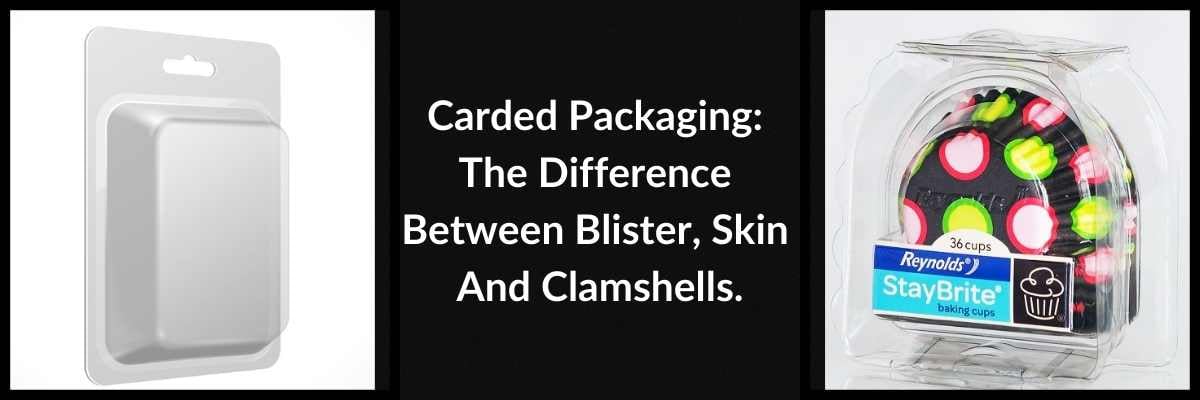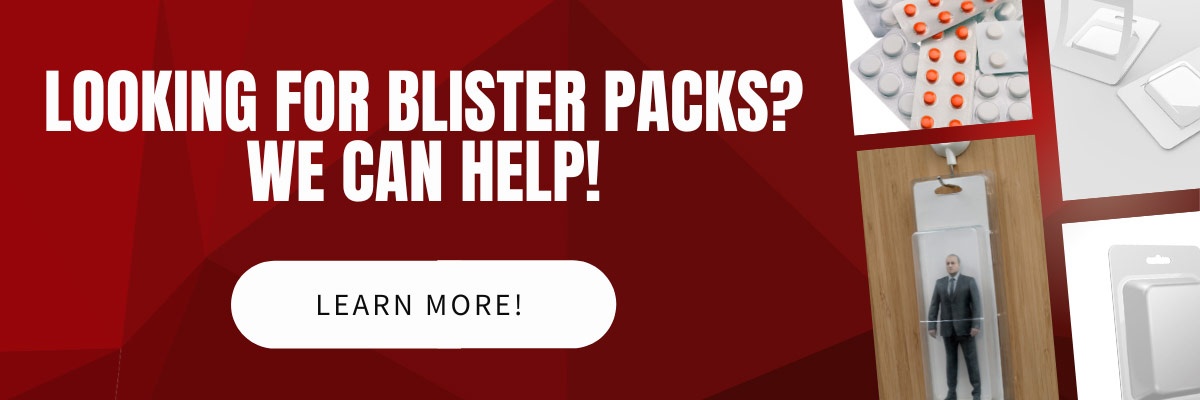Carded Packaging: The Difference Between Blister, Skin And Clamshells.
Packaging Materials | The Business of Packaging | Packaging Design | Shipping Protection | Packaging Psychology
Carded packaging is a type of packaging which includes three subcategories. Skin, blister, and clamshell packaging supplies are widely used across the world, but what are differences between these three items?
From fishing supplies to hardware, from pharmaceuticals to arts and crafts, the applications for these packaging types are virtually endless, but each of them has their own subtle differences and uses.
While all in the same class of packaging supplies, clamshell, skin, and blister packaging are each a unique product in and of themselves. Below we will dive into a broad description of each type of carded packaging, discuss their uses and benefits as well as potential downfalls and environmental impacts.
Skin Packaging
What is skin packaging?
Skin packaging (also known as skin packs), is a carded packaging supply that places the product contained within on a piece of paperboard. A slim sheet of see-through plastic which covers the product and paperboard backer is then applied.
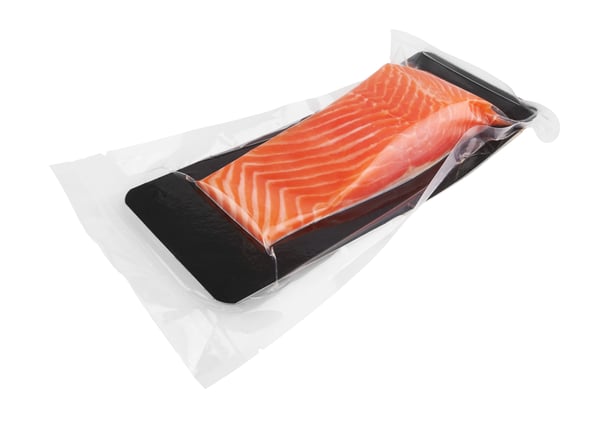
The paperboard may or may not also have a heat-seal coating. The plastic substrate (LDPE, PVC, ionomer, etc.) is made soft via the use of heat and is then placed over the product on the paperboard backer. Vacuum sealing is occasionally implemented to ensure a tight fit. The substrate then bonds to the heat-seal coating on the paperboard.
Skin packaging looks and feels similar to a blister pack, the notable difference being that the plastic covering the product takes the shape of the product, rather than being pre-formed prior to application.
Plastic film used in skin packaging includes:
- Polyethylene
- PVC
- Ionomer
- PET
Products commonly sold in skin packaging include fish, pork, chicken, beef, tools, hardware and etc. Virtually any object considered a small consumer product can be packaged in these dynamic packaging supplies.
One of the major drawbacks to skin packaging is an experience known as "wrap rage" which is a feeling of extreme annoyance and/or stress from not being able to easily open a product’s packaging and having to utilize scissors or another tool just to remove the packaging from the product.
Of the three carded packaging types we are discussing today, skin packs are perhaps the most troublesome products in this respect. On the other hand, clamshells are probably the easiest type of packaging to open. Clamshells often feature the ability to be easily pulled apart without the need for the intervention of scissors or cutting tools.
The reason skin packaging is often chosen in light of the potential frustrations is that they offer a more secure and tight packaging than both blister or clamshells. When being used for food applications such as the packaging of fish, beef, pork or chicken, they are superior in the protection of the product and the prevention of contamination as they are vacuum sealed and the product contained within is devoid of oxygen.
What Are The Benefits Of Skin Packaging?
- Tightly Packages Contents
- Broad Spectrum Of Uses
- Easy To Source
What Are The Downfalls Of Skin Packaging?
- Can Be Complicated To Recycle
- Moderate To Advanced Wrap Rage
Looking for blister packs? We can help!
Blister Packaging
What is Blister Packaging?
Blister Pack is the name associated with several types of pre-formed plastic packaging which are commonly used in the packaging process of products such as consumer goods, perishables, and pharmaceuticals.
The main dynamic of the blister pack is a pocket made from thermoformed plastic. A backer of paperboard, aluminum foil or plastic substrate is applied to the back of the pocket which is used to contain the products inside. Dual folding blister packs without a paperboard backer or seal is known as a clamshell.
These packaging supplies are an excellent choice for protecting products from damage and other external threats including humid air and contamination for very long periods of time. Opaque blister packs are also well known for protecting products that are sensitive to light and UV rays.
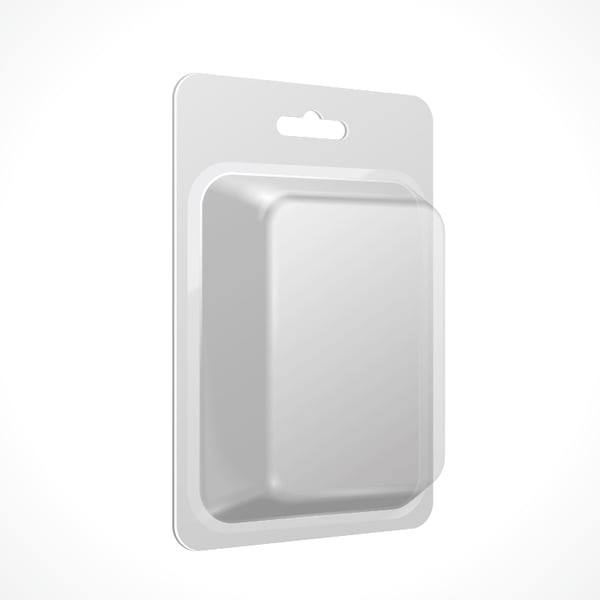
Products commonly found inside blister packs include fishing lures, art supplies, toys and etc. If you have any new packages of batteries in your house, chances are they are sporting a well-branded blister pack with a paperboard backer.
And when it comes to your local hardware store, there are literally dozens if not hundreds of various products from nails and screws to hammers, screwdrivers and other tools that can be found in some form of a blister pack.
As one of the world’s most popular packaging supplies, they do unfortunately turn up in the ocean quite a bit as fishing supplies are one of the top contributors to the ever-growing pacific garbage patch and other similar plastic formations in the world's oceans at large.
That being said, the materials found in blister packs are usually made from recyclable plastics and corrugated substrates. As such, the responsibility for proper recycling and disposal of said packing supplies rests in the hands of the consumers and end users as individuals.
For people who are concerned about the environmental impact of the packaging products they choose, trapped blister packaging may be their best choice...
Trapped blister packs are a hybrid paperboard and plastic type of blister packaging. The product is encased in a thermoformed pocket that is trapped between two cards.
This kind of blister pack is earth-friendly with little to no plastic content and includes a secure, "zero wrap rage" design. Trapped blister packs provide the protection and visual appeal you crave for your packaging without the additional cost or environmental impact.
What Are The Benefits Of Blister Packaging?
- Affordable
- Large Array Of Applications
- Popular Among Consumers
What Are The Downfalls Of Blister Packaging?
- Not Always Easy To Recycle
- May Induce Wrap Rage
Clamshell Packaging
What Is Clamshell Packaging?
Of all the carded packaging supplies, clamshell packaging is perhaps the easiest to use. Clamshells look a bit like their namesake as they are made from two identical "shells" that are connected on one side with the other having small hinges that allow it to lock shut.
Clamshell containers are often made from a variety of plastics such as polystyrene, polyester, or PVC. The substrate can be thermoformed and/or be injection molded into various shapes and sizes.
Folding cartons made of paperboard or paper pulp are less common but currently available clamshell products. Other types of materials used in creating clamshells include styrofoam, cellulose, wheat, and pulp made from wood shavings.
If you have ever grabbed lunch from one of those trucks that come to serve food at a job site, or gone shopping at a supermarket, chances are you are familiar with clamshell packaging.
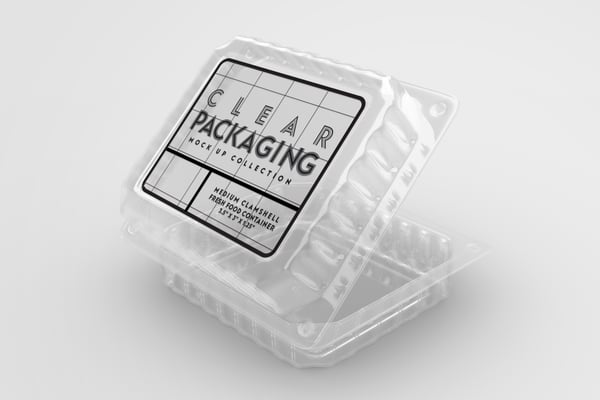
Items commonly packaged in clamshells include salads, pre-made sandwiches, fruit, cupcakes, small mechanical items, and various consumer goods.
Clamshells are an excellent choice in regards to the environment as they are almost always made of one single type of substrate whether it be plastic or paper pulp, thus making for easy recycling.
Even in single-stream recycling programs which will often throw away or burn some recyclables as they often contain two types of material, clamshells tend to make it through the actual recycling process.
What Are The Benefits Of Clamshell Packaging?
- Easy To Use, No Wrap Rage
- Easy To Recycle
- Easy To Source
What Are The Downfalls Of Clamshell Packaging?
- Does Not Tightly Contain Products
- Not A Good Choice For Certain Applications IE: Meat Packaging
Which Carded Packaging Supplies Are Right For You?
When your company is trying to figure out which type of packaging supplies are right for your business and products, you may want to contact an expert and get an audit of both your packaging machinery and the products that you are packaging.
You may find that blister packaging is a perfect fit for all of your products. On the other hand, if your products come in various shapes and sizes you may want to use a combination of skin, blister and clamshell packaging to ensure that each product is packaged correctly.
Speaking with a packaging specialist will help you to identify the best option(s) based upon your budget and the related dynamics of your packaging line. An analysis of your packaging processes may also offer the opportunity to save money while reducing your impact on the environment.
Speaking to a packaging professional regarding a consultation on how to optimize your packaging products will help you to choose the best packaging supplies for your needs.
About Nathan Dube
As the Digital Marketing Specialist at Industrial Packaging, I am honored to create content for such a phenomenal company and work with one of the greatest teams in the Packaging Industry. Whether creating a video, writing blog posts or generating other pieces of content and multimedia, I am always excited to help educate and inspire our prospects and clients to reach their highest potential in regards to their packaging processes and needs.
